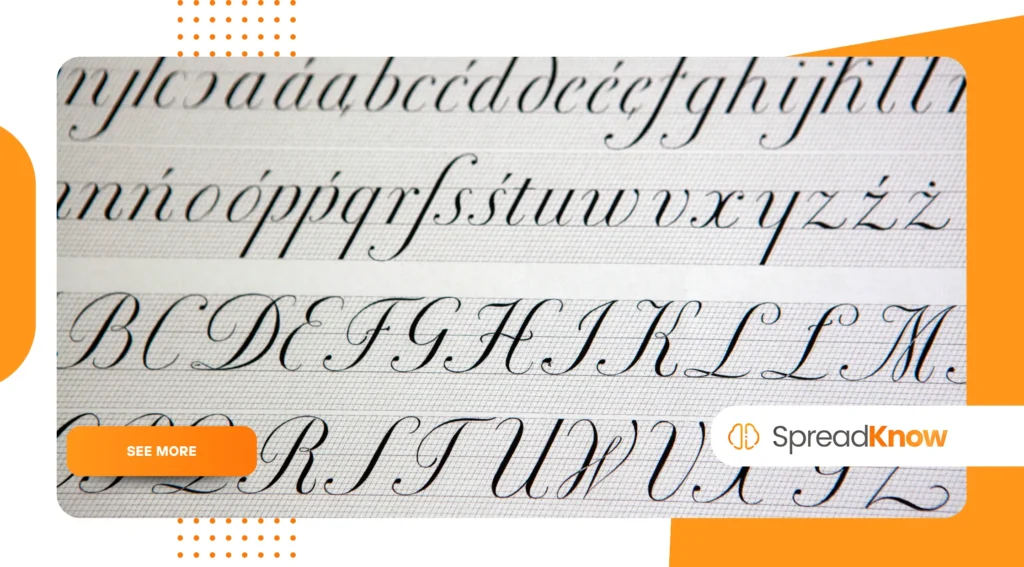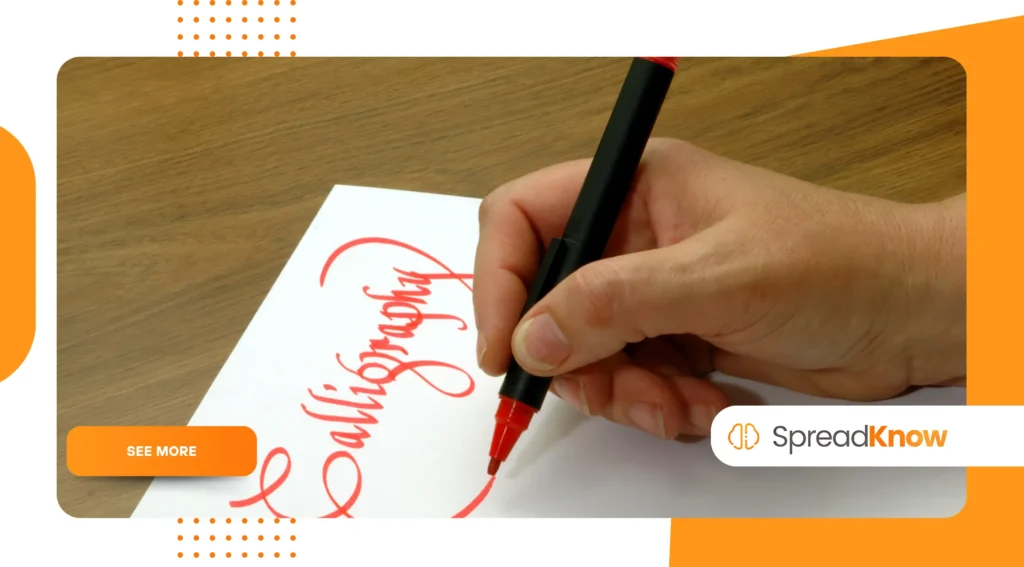Learning Calligraphy: Tools, Techniques, and Practice Tips

The art of learning calligraphy goes beyond beautiful writing — it’s a mindful practice that blends patience, creativity, and discipline.
Anúncios
In a world increasingly shaped by screens, rediscovering the rhythm of ink and paper has become a meaningful way to reconnect with focus and craftsmanship.
Table of Contents
- What Is Calligraphy and Why Learn It in 2025
- Essential Tools for Beginners
- How to Develop Technique and Consistency
- How Long It Takes to Learn Calligraphy
- Why Mindful Practice Matters
- Advanced Tips to Improve Your Style
- Turning Calligraphy into a Professional Skill
- Frequently Asked Questions
What Is Calligraphy and Why Learn It in 2025
Calligraphy — from the Greek kallos (beauty) and graphein (writing) — is the visual art of expressive handwriting.
The rise of learning calligraphy in 2025 reflects a growing desire to slow down and engage with tactile, meditative forms of creativity.
Research from the American Psychological Association shows that manual artistic activities such as painting or handwriting can reduce stress levels by up to 45% when practiced regularly.
Anúncios
This makes calligraphy not only an art form but also a proven form of mental relaxation.
Modern learners are drawn to calligraphy because it cultivates patience, precision, and self-expression.
Many find that a few minutes of daily practice enhance focus and emotional balance — a welcome contrast to fast-paced digital life.
Moreover, creative industries increasingly value handwritten lettering in packaging, branding, and event design.
As brands seek authenticity, calligraphy becomes both a mindful hobby and a professional opportunity.
+ How Social Media Crackdowns in Some Countries Affect News Access
Essential Tools for Beginners
Choosing the right materials can make learning calligraphy easier and more enjoyable. While talent and dedication matter most, quality tools help beginners achieve better control and smoother results.
| Tool Type | Example | Recommended Use |
|---|---|---|
| Flexible tip pen | Tombow Fudenosuke | Perfect for modern brush lettering beginners |
| Classic dip pen | Pilot Parallel Pen | Best for traditional scripts like Italic and Copperplate |
| Smooth thick paper | Rhodia or Canson 90gsm+ | Prevents bleeding and allows crisp strokes |
| Liquid watercolor ink | Ecoline or Dr. Ph. Martin’s | Creates gradient and colorful artistic effects |
A good practice setup includes a comfortable writing surface, proper lighting, and clean hands to prevent ink smudges.
Beginners should avoid cheap paper, as it can cause feathering and inconsistent strokes.
Keep in mind that professional calligraphers often say, “Your pen doesn’t make your art — your rhythm does.”
The right tools help, but consistent, mindful repetition is what truly shapes your style.
+ Spread the Knowledge of DIY Home Automation for Beginners
How to Develop Technique and Consistency
Technique in learning calligraphy depends on stroke control, hand pressure, and rhythm. Smooth transitions between thick and thin lines define the beauty of each letter.
Start by mastering the two fundamental strokes: upstrokes (light and thin) and downstrokes (heavy and thick). Practicing these motions separately improves muscle memory and balance.
Set aside 15–20 minutes daily for focused drills. Practicing the basic shapes — ovals, loops, and vertical lines — builds the foundation for clean, consistent lettering.
Over time, your hand learns to respond intuitively to movement and pressure.
Many learners use guideline sheets with slanted lines to maintain letter proportion. These sheets reinforce spacing consistency, one of the hardest skills to master.
You can find certified courses from the Society of Scribes in New York or the International Association of Master Penmen for structured learning (https://www.societyofscribes.org).
How Long It Takes to Learn Calligraphy
Mastering calligraphy depends on time, style, and commitment. For most learners, visible improvement appears within three months of regular practice.
Achieving artistic fluency, however, often takes six months to a year.
Research in motor-skill learning from Harvard University confirms that short, consistent sessions produce better long-term results than infrequent, long practice hours.
Regular repetition builds neural connections responsible for “muscle memory,” allowing smoother movements over time.
Each style — Copperplate, Gothic, Italic, or Modern — requires different hand angles and pen pressure.
Beginners usually start with modern calligraphy because it offers flexibility and encourages personal interpretation instead of strict structure.
Think of the process like learning a musical instrument: awkward at first, harmonious with persistence. The secret is patience and awareness of progress, not speed.
+ The Art of Hand Lettering: How to Start Your First Project
Why Mindful Practice Matters
When handwriting becomes intentional, it stimulates deeper cognitive and emotional engagement.
Studies from Johns Hopkins University show that manual writing activates brain regions related to memory retention and coordination, which typing does not.
In that sense, learning calligraphy transforms into an active form of meditation. Each stroke mirrors your breathing rhythm and emotional state.
Over time, practitioners often notice increased concentration, lower anxiety, and improved creative flow.
Mindful writing also enhances patience. Observing the ink flow and correcting each mistake gently teaches resilience — an essential skill both in art and in life.
Treat each session as a conversation between mind, hand, and paper. The more present you are, the more expressive and confident your strokes become.
Advanced Tips to Improve Your Style
Once the basics feel comfortable, exploring advanced techniques adds personality to your work. Professional calligraphers often say, “Letters have rhythm; find your tempo.”
- Study historical scripts — Analyze manuscripts from Renaissance or medieval periods to understand traditional proportions.
- Experiment with composition — Try combining serif and script fonts to balance structure and elegance.
- Blend analog and digital methods — Using tools like Procreate or Adobe Fresco allows you to digitalize calligraphy without losing texture (https://www.adobe.com/creativecloud.html).
- Challenge your surface — Practice on watercolor paper, fabric, or wood to explore new textures and pen behaviors.
- Observe your grip and posture — Relaxed shoulders and a loose grip improve ink flow and reduce fatigue.
Advanced learners also use light boxes to trace letterforms and refine spacing. The goal is not perfection, but fluidity — each imperfection adds authenticity to your art.
Turning Calligraphy into a Professional Skill

Beyond being a relaxing hobby, learning calligraphy can evolve into a rewarding profession.
Calligraphers today find opportunities in event invitations, logo design, signage, packaging, and even tattoo lettering.
According to Upwork’s 2024 Freelance Skills Index, lettering, and calligraphy projects grew by 40% between 2022 and 2024.
The rise of personalized branding and handmade aesthetics fuels demand for authentic penmanship in both digital and physical media.
To turn your passion into profit:
- Build a portfolio with diverse projects.
- Create a social media presence to showcase progress.
- Offer workshops or digital downloads for beginners.
Clients often value the emotional connection behind handwritten work. Your style becomes your signature — a bridge between tradition and innovation.
Common Mistakes Beginners Should Avoid
Even motivated learners encounter challenges. Some common mistakes can slow down progress if unnoticed:
- Skipping basic drills: Foundational exercises strengthen hand control; neglecting them leads to inconsistent lettering.
- Pressing too hard: Calligraphy relies on rhythm, not pressure. Excess force damages pen nibs and distorts strokes.
- Ignoring posture: Poor ergonomics cause fatigue and irregular line flow.
- Using low-quality paper: Cheap materials cause ink bleeding and frustration.
Awareness of these pitfalls saves time and boosts confidence. Remember: precision grows through mindful repetition, not through shortcuts.
Frequently Asked Questions
1. Can I learn calligraphy without artistic talent?
Absolutely. Calligraphy depends on technique, not natural drawing ability. Consistent practice transforms shaky strokes into expressive letters.
2. How much time should I dedicate daily?
Fifteen to twenty minutes of focused practice is enough to build steady improvement. Quality outweighs quantity.
3. What’s the easiest script for beginners?
Modern calligraphy or brush lettering offers flexibility and fewer rules, making them great starting points.
4. Do I need expensive tools?
No. Reliable mid-range pens and paper are enough to learn effectively. Focus on control before investing in luxury materials.
5. Can calligraphy improve mental health?
Yes. Studies from the APA show creative manual activities reduce anxiety and enhance mindfulness by promoting concentration and relaxation.
Conclusion
In the fast-paced digital era, learning calligraphy reawakens our connection to patience, rhythm, and self-expression. Every stroke tells a story of attention and artistry — a small rebellion against haste.
Calligraphy is more than decoration; it’s discipline shaped by ink and breath. With each session, you sharpen not only your skill but also your awareness of detail and calm.
Whether you aim to create wedding invitations or simply slow down your evenings, the journey of learning calligraphy offers a meaningful balance between art, focus, and serenity.
Takeaway: Start small, stay consistent, and let your handwriting evolve into art that reflects your inner rhythm.
References:
- American Psychological Association – https://www.apa.org
- Johns Hopkins University – https://www.jhu.edu
- Harvard University Motor Learning Study – https://www.harvard.edu
